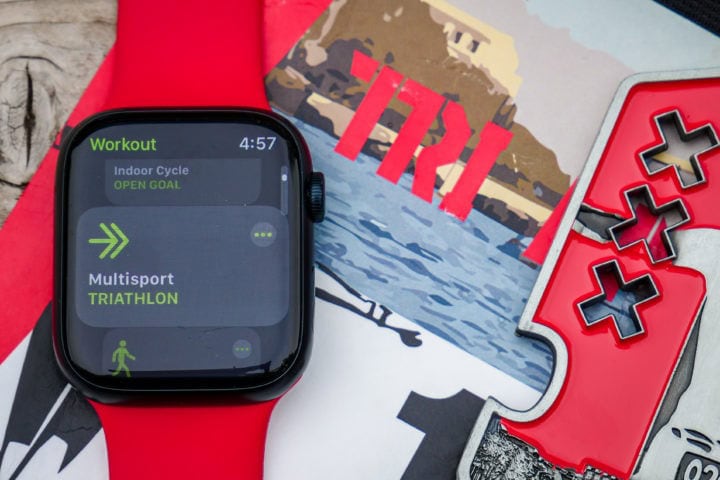
Earlier this summer, Apple announced WatchOS 9, which is by far the company’s most ambitious push into endurance sports to date for their Apple Watch platform. It includes customizable interval support, running power, and a multisport mode, among many other changes (all of which I’ve outlined here). I’ve previously shown how the new running power feature works, and so now it’s time to show how the triathlon mode works.
While these features are still in beta today, Apple will likely transition these features to ‘production’ sometime in September, assuming the usual annual release cycle. That’s the same time they typically announce new iPhones and new Apple Watch units. The most current Apple Watch is the Series 7 from last fall.
In any event, for this post I’m going to take a look at the current state of the triathlon mode, both as it stands on the latest beta right now, but also any changes since the actual triathlon race I did a bit over a month ago with it (sorry, it’s been a busy summer). From an on-device standpoint, virtually nothing has changed since that race. However, Apple has made substantial changes to the app side, which conveniently keep updating my previous race to show the fuller information. For example, some quirks/issues I saw back then have now been addressed by the phone app side. Of course, that’s the entire point of beta, to find issues and fix them.
With that, let’s dive into it.
(Usual note that this is still considered Beta software, and as such, things can and will change prior to release.)
The Setup Options:
The first thing to know is that Apple isn’t just limiting it to triathlon. It’s really a more flexible multisport watch, that allows you to mix and match sports. Meaning, it needn’t be just swim > bike > run. Instead, it can be a duathlon, a swim-run (where you go back and forth endlessly), or whatever. By default, Apple has these stock options:
– Multisport Triathlon (Swim-Bike-Run)
– Multisport Run-Bike-Run
– Multisport Swim-Bike
– Multisport Bike-Run
– Multisport Swim-Run
– Multisport Run-Swim-Run
However, you can create your own multisport option, with these specific sports:
– Outdoor Run
– Outdoor Cycle
– Openwater Swim
– Indoor Run
– Indoor Cycle
– Pool Swim
Somewhat interestingly, you can’t have both an outdoor run and an indoor run in the same profile. I can’t possibly think of a race where that occurs, but hey, I’m here for useless geeky details. You can however do an indoor swim, indoor bike, and then outdoor run – which is a common indoor triathlon setup. If you create a custom sport profile (called a ‘Workout’), you can give it a custom name as well.
Now at present, you can’t actually customize any of these sport profiles from the phone. While past iOS and Apple Watch versions have allowed that, that’s no longer the case here. I presume that’ll probably make its way back into builds down the road, as it’s otherwise somewhat cumbersome to do on the small touchscreen.
Each of the data pages, called ‘Workout Views’, in Apple lingo, is specific to the sports you included in your multisport setup. Meaning, if you’ve got a traditional triathlon with swim/bike/run, then it’ll utilize the data pages as you’ve configured for those sports individually (e.g. the Outdoor Run profile). These are again, configurable on the watch, but not yet on the app:
As noted in my running power post, Apple has upped their game though with not just the running power fields, but also the running efficiency metrics fields and even heart rate/power graphs.
Additionally, these individual sports are where you configure alerts (including pace, heart rate, cadence, power, time, and splits), though I only used the default split at 1KM in my race. With that, there’s nothing else to configure here.
During the Triathlon:
This will, ironically, be the shortest section in this post. Namely because there’s very little control of your race once you get going (at this point anyways). In my case, it was a swim-dock start, time-trial style. So that meant that competitors were staggered at 1-second intervals as they ran down a dock and jumped into the water. Partway down the dock was a timing mat to track your chip-time.
So I loaded up the Apple Watch triathlon profile while in the starting corral, and then as I neared my starting point, I hit go to account for Apple’s 3-second count-down. Thus ideally crossing the mat at the same time it showed zero. Here’s what that looks like, since I didn’t carry a camera mid-race this time.
While I understand Apple’s long-standing countdown aspect here, I’d argue it’s not super ideal in triathlon. First off, when the gun goes off, it goes off. Sometimes there’s a countdown, and sometimes not. Secondly, since Apple doesn’t lock the GPS signal prior to pressing go, there’s a strong chance a user will hit ‘Go’ and immediately put their watch in the water (where there’s no signal). Perhaps when a user selects triathlon Apple is now quietly finding signal behind the scenes (like all other sport watches do), but it’s hard to know.
In my case, since I had to run further on the dock, Apple kinda lucked out here. Once I got into the water, it was properly tracking my swim. Don’t worry, I’ll show you all the data in a second, but here’s the dock for context later.
While I’d like to offer you perspectives on the swim metrics mid-swim, the reality is the Amstel river in this section isn’t super clear. I’m pretty sure mud-soup that my daughters make has more visibility than this water did. I couldn’t even see my elbow – let alone the display on the watch. That said, as I’ve shown numerous times over the years, Apple in terms of openwater swimming is actually very good.
As I exited the water, it didn’t take long to switch into the first transition mode, called T1 (short for transition 1). It’ll show a small ‘T’ in the upper corner with a timer next to it. Here’s what it looks like in a snapshot from their presentation (since trying to capture a photo of this mid-race was low on my priority lists):
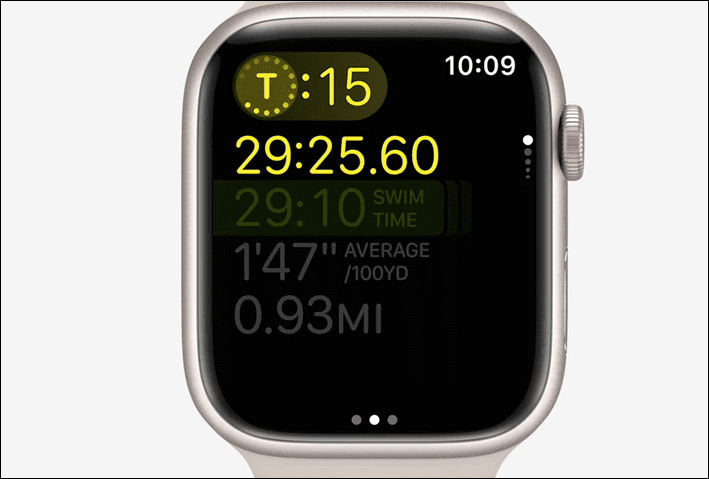
At present, there’s no manual transition/override between sports. You’re just along for the ride. You can see me here (at right) ready to manually press the transition on the Garmin Forerunner 955 as I cross over the timing mat about 2 seconds ahead of me (out of frame)
This is functionally similar to what Wahoo does in their Wahoo RIVAL watch, except you still maintain manual control over the sport changes if you want. Here, that’s not an option at this time, but hopefully by the time release happens, it’ll be there. For now, it’ll automatically advance between each sport, and also figure out whether or not you’re in transition.
And to its credit, it did that quite well – at least during the race. Off onto the bike I went, and by the time I looked down at the watch a few hundred meters into the ride, it was already showing the cycling-focused data fields. Also, here’s a windmill – and me. The red watch on my right wrist is the Apple Watch, Series 7. The windmill beyond my left wrist is a De Riekermolen, Series 1636.
Of course, the bike segment is probably the one where we see the biggest differences between Apple and most other multisport watches – namely due to the lack of sensor support. There’s no cycling power meter support here, or cadence sensor support. Both have standards defined by the Bluetooth SIG, of which Apple is a member. But Apple only supports (natively) Bluetooth HR straps. There are a handful of apps that support Bluetooth power meters and cadence sensors, though I’m not aware of any 3rd party Apple Watch apps that can do triathlon multisport mode and also have Bluetooth power meters.
It’s hard to say whether or not Apple will ever expand into these areas. Setting aside current hardware battery drain, certainly, if looking at more of a ‘beginner’ crowd, then neither power meter nor cadence sensor support is critical. However, the majority of athletes competing in longer distance races these days do indeed have power meters on their bikes (and that number only continues to rise). I also can fully understand Apple’s probable hesitancy. Of all the Bluetooth specifications out there, the power meter one is widely seen in the industry as a proper dumpster fire. It was conceived by people with competing interests, and in some cases, no actual background in power meters. It’s why there continues to be compatibility issues these days with major brands on Bluetooth power meters and watches/bike computers.
That said, there really aren’t all that many power meter brands out there. If I can have one unit of virtually everything in the market in the DCR Cave, then so can Apple. Anyways, fodder for another time.
With my cycling done for the day, it was on to the run. In this case, it detected the switch to T2 (transition 2) almost instantly. Obviously, that’s a pretty easy thing to detect from an accelerometer/gyro standpoint. What’s far more tricky is to figure out the exact point where T2 ends and my official run begins – given that I’m usually running from my transition rack, all the way across the transition zone, eventually out onto the official run course. On most watches, you’ll press a button as you cross that run line, but with the Apple Watch, you just let it do its thing.
One quirk of the beta version at the time was that you couldn’t switch data pages mid-run (or ride), without unlocking the watch. Meaning, you had to swirl the digital crown a bunch every single time you wanted to change a data page. That’s a solid pain in the butt, so hopefully it’s something fixed in the most recent build, or future builds.
In terms of the performance during the run, it was just like any other Apple Watch run, showing my metrics – albeit including running power. I didn’t take a camera on the run, so, here’s just a photo of me finishing, instead.
And in fact, it’s at the finish line that becomes the only point you can actually control what the watch is doing – when you stop it/the race. Afterwards, you’ll get an itemized summary of your sport segments:
And with that, it’s onto the Apple Fitness app to look at the results. Oh, wait, some of you probably want my official race results:
The short post-race debrief version is I went waaaay too easy on all three segments (especially swim and run, but also bike). My body just mentally settles into more of a half-iron or fast-Olympic distance pace. And in this case, I simply wasn’t pushing hard enough until it was far too late to make it up. But hey, that’s the first race of the year for ya.
Post-Race:
The default app to look at your data is the Apple Fitness app, which is the same app where you’ll see your steps and other fitness-related metrics. The triathlon will show up as a multisport workout, and within that, you’ll see the individual sports listed. You’ll see the transition in between, however, you can’t tap on those transitions to see exact GPS paths (whereas you can on the other sports).
Here’s how each of those three sports looked, first the swim data:
The GPS track here was spot-on accurate when it decided I was swimming, though, I’m pretty sure I didn’t do any Butterfly during this swim. You can see it’s clearly confused about the whole dock running thing, though I’ll give it an ‘A’ for effort on trying to represent that.
The swim tracks from the Garmin were just an itty-bitty-bit more correct because it properly shows exactly which ends of the dock I got in/out, but that’s really nit-picking.
Moving onto the bike, here’s that:
The start/end points here are precisely the same as the Garmin Forerunner 955 that I manually controlled. Granted, as I noted earlier, it’s pretty easy from an algorithm standpoint to separate cycling versus the pounding of running. Here’s the Garmin start/end points:
Speaking of which, onto the run:
As I noted earlier, the Apple Watch started my run about 100m too early, while I was still in transition. This had the ripple effect of showing a slower run pace (because it was a longer duration/time). You can see below on the Garmin exactly where the run actually started, specifically note that in Garmin’s case, that green dot is at the far right side of the park, where I manually pressed it as I exited transition onto the run course.
(Yes, this course was actually short of the proper 5KM advertised, much to my annoyance. In this case, especially given the massive park areas they had, there’s no valid reason they couldn’t have done a simple 200m out/back on the field to fix this. Cycling routes are hard, but adding 400m of running would have been trivial on this specific route.)
Still, overall as I noted it’s pretty impressive to figure that all out automatically. And the appeal of not pressing any buttons at all is very strong. You don’t worry about screwing up the watch, you just push hard physically instead.
In terms of exporting all this, that’s where it gets messy. I’m sure at some point Strava will support uploads, as well as others. In the meantime, a beta version of HealthFit allows me to export out the files to platforms like TrainingPeaks/Strava/etc… And even cooler is it even shows the transition paths, something that Apple’s native app doesn’t.
This is an area that I still think Apple really needs to address more natively though, if they want increased uptake from endurance sports athletes. There are countless other examples of better native API integration to 3rd party platforms within Apple’s own iOS and WatchOS ecosystem for other content types. Meaning, that while I love apps like HealthFit, I shouldn’t need them to simply upload to major platforms.
Wrap-Up:
In many ways, the Apple Watch plan for triathlon probably isn’t to be a triathlon watch for the majority of triathletes. It’s likely to keep those that might want to dabble in triathlon, from buying a Garmin/Suunto/Polar/COROS watch for that effort. Meaning, the battery life aspect of current Apple Watch hardware alone won’t suffice for anything more than a half-iron distance triathlon (and a front-of-pack one at that). However, for virtually all Sprint & Olympic distance competitors, or other multisport competitors under about 6 hours, the Apple Watch will tick the boxes for their first few races.
And ironically enough, due to a minor Dutch language/website misunderstanding when my wife and I signed up for this race, we ended up in what was essentially a charity race within a race. Meaning that the majority of the couple-hundred people in my race wave weren’t super hardcore triathletes. They were regular people who just signed up for what was likely their first triathlon. And maybe their last triathlon. This Apple Watch update would have allowed them use their Apple Watch perfectly fine, without learning anything complex, to track that race. And in turn, it would have likely kept a number of those people from going out and buying a more sport-specific watch to accomplish that race.
When triathlon support was announced, far too many people focused on existing device battery life aspects. But even in these devices, it’s plenty for Apple’s target market. And given all the other relatively hardcore running features Apple is adding to Watch OS9, it sure seems like they’re setting themselves up for shaking up the hardware side as well.
Whether or not that happens, we’ll have to wait till September to see. But even if it doesn’t, these updates chip away reasons someone might defect from the Apple Watch, considerably more than most realize.
With that – thanks for reading!
FOUND THIS POST USEFUL? SUPPORT THE SITE!
Hopefully, you found this post useful. The website is really a labor of love, so please consider becoming a DC RAINMAKER Supporter. This gets you an ad-free experience, and access to our (mostly) bi-monthly behind-the-scenes video series of “Shed Talkin’”.
Support DCRainMaker - Shop on Amazon
Otherwise, perhaps consider using the below link if shopping on Amazon. As an Amazon Associate, I earn from qualifying purchases. It doesn’t cost you anything extra, but your purchases help support this website a lot. It could simply be buying toilet paper, or this pizza oven we use and love.


![clip_image001[7] clip_image001[7]](https://media.dcrainmaker.com/images/2022/08/clip_image0017_thumb.jpg)
![clip_image001[9] clip_image001[9]](https://media.dcrainmaker.com/images/2022/08/clip_image0019_thumb.jpg)
![clip_image001[11] clip_image001[11]](https://media.dcrainmaker.com/images/2022/08/clip_image00111_thumb.jpg)
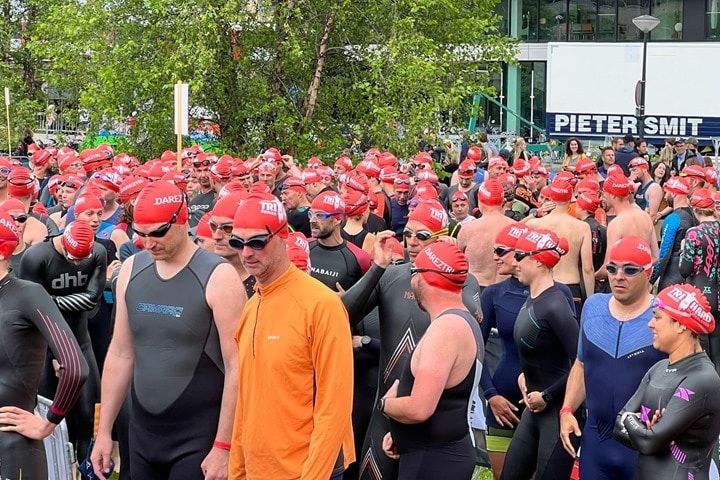
![clip_image001[13] clip_image001[13]](https://media.dcrainmaker.com/images/2022/08/clip_image00113_thumb.jpg)

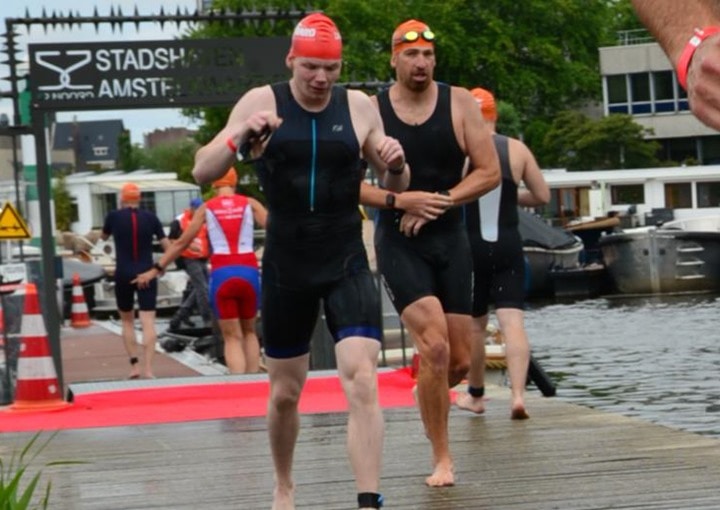
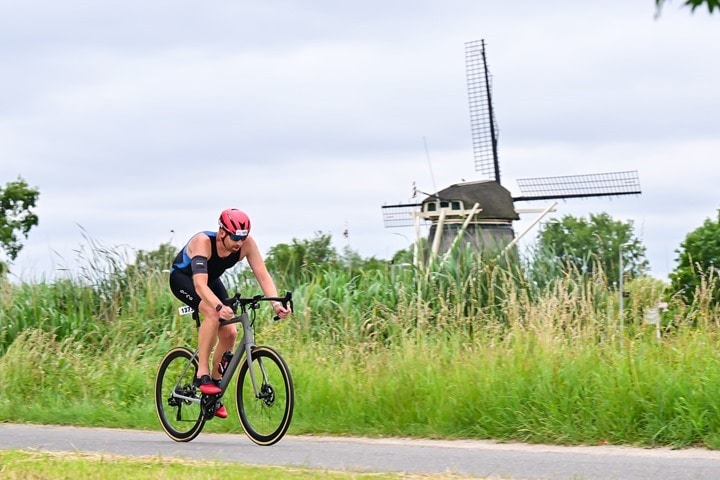
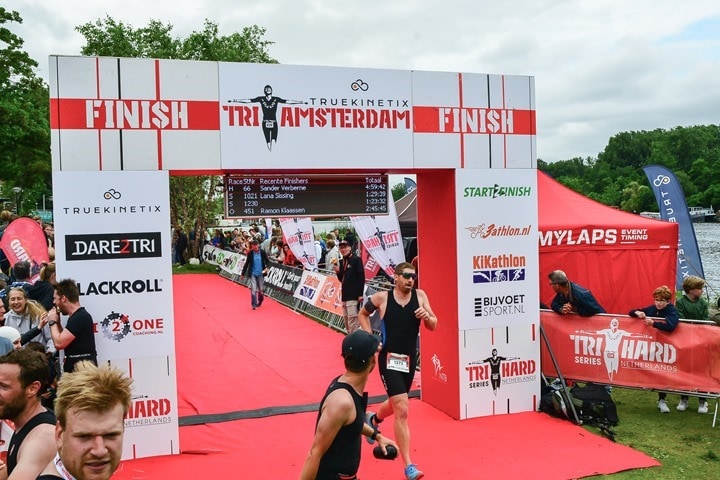
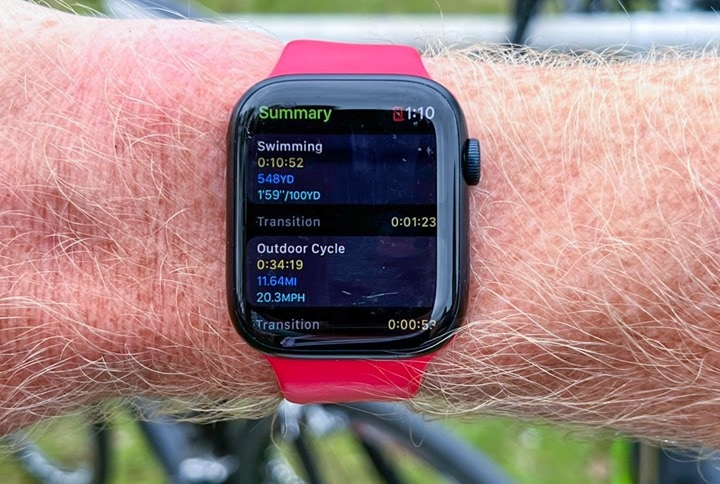
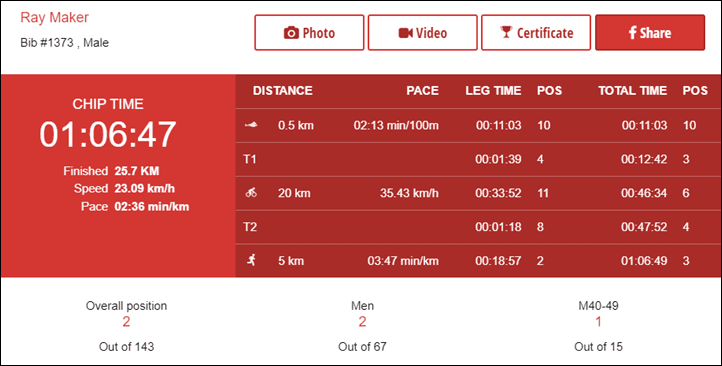

![clip_image001[6] clip_image001[6]](https://media.dcrainmaker.com/images/2022/08/clip_image0016_thumb.png)
![clip_image001[8] clip_image001[8]](https://media.dcrainmaker.com/images/2022/08/clip_image0018_thumb.png)
![clip_image001[10] clip_image001[10]](https://media.dcrainmaker.com/images/2022/08/clip_image00110_thumb.png)
![clip_image001[12] clip_image001[12]](https://media.dcrainmaker.com/images/2022/08/clip_image00112_thumb.png)
![clip_image001[14] clip_image001[14]](https://media.dcrainmaker.com/images/2022/08/clip_image00114_thumb.png)
![clip_image001[16] clip_image001[16]](https://media.dcrainmaker.com/images/2022/08/clip_image00116_thumb.png)
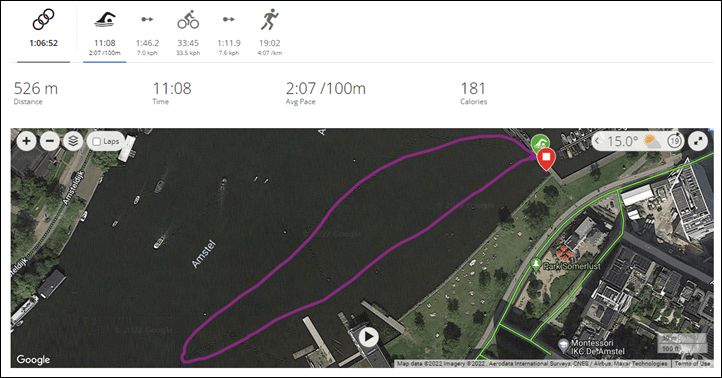
![clip_image001[18] clip_image001[18]](https://media.dcrainmaker.com/images/2022/08/clip_image00118_thumb.png)
![clip_image001[20] clip_image001[20]](https://media.dcrainmaker.com/images/2022/08/clip_image00120_thumb.png)
![clip_image001[22] clip_image001[22]](https://media.dcrainmaker.com/images/2022/08/clip_image00122_thumb.png)
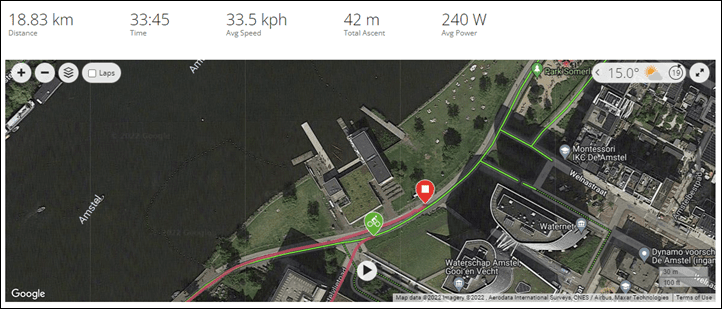
![clip_image001[24] clip_image001[24]](https://media.dcrainmaker.com/images/2022/08/clip_image00124_thumb.png)
![clip_image001[26] clip_image001[26]](https://media.dcrainmaker.com/images/2022/08/clip_image00126_thumb.png)
![clip_image001[28] clip_image001[28]](https://media.dcrainmaker.com/images/2022/08/clip_image00128_thumb.png)
![clip_image001[30] clip_image001[30]](https://media.dcrainmaker.com/images/2022/08/clip_image00130_thumb.png)
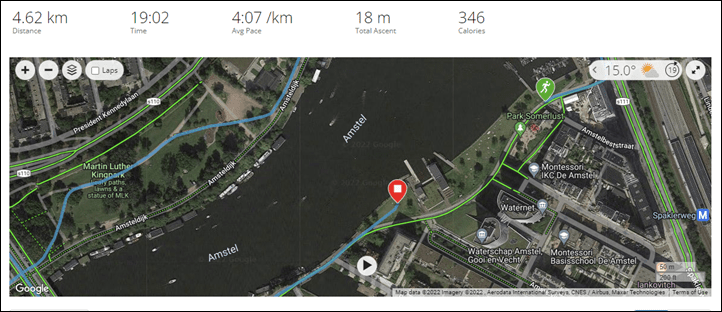
![clip_image001[32] clip_image001[32]](https://media.dcrainmaker.com/images/2022/08/clip_image00132_thumb.png)
![clip_image001[34] clip_image001[34]](https://media.dcrainmaker.com/images/2022/08/clip_image00134_thumb.png)
![clip_image001[38] clip_image001[38]](https://media.dcrainmaker.com/images/2022/08/clip_image00138_thumb.png)
![clip_image001[36] clip_image001[36]](https://media.dcrainmaker.com/images/2022/08/clip_image00136_thumb.png)
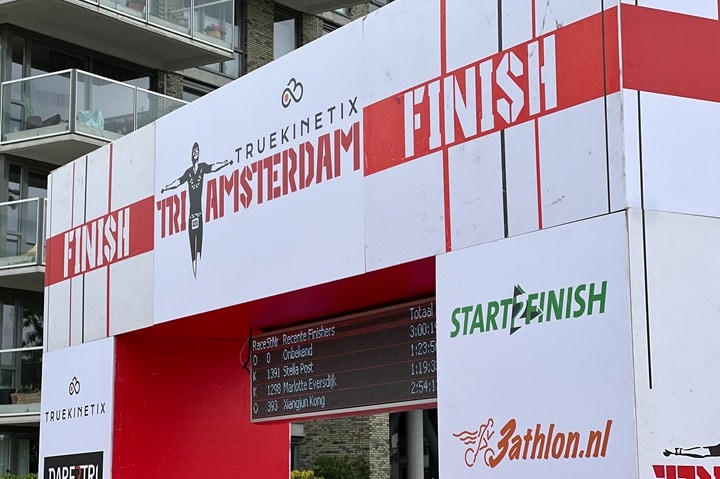





















You should be able to ‘skip’ the 3 second countdown by tapping the screen when it starts to countdown. Still not ideal at the start of a race though.
nice write up!! I was going to try it in a race in a month or so.
I see you have the healthfit app in beta which just released the multisport support you used. Rungap (a similar product) isn’t apparently releasing their multisport support until os9 goes live.
FYI: segments: apple uses that word to mean something different (manual laps, kinda)
Thanks! Yeah, I’ll give it another whirl after release, perhaps in a racer later in September. Nice to see HealthFit already go to production supporting it!
Hi, Ray!
I know this is an article about the apple watch, but since you used the forerunner 955 for the race, I’ll do some nasty hijacking and ask a garmin-related question. Did your 955 show you GPS track for transitions? There seems to be an ongoing issue with garmin multisport watches, where you no longer see GPS track for multisport transitions (it used to work up until several months ago), although it is not clear to me whether this is an issue with the watch firmware (one that would affect several models), or rather with garmin connect. There are several threads on the garmin forum discussing it. How are your transitions looking for this race?
Interesting, you’re right. They seem to be missing (the GPS track portion): link to connect.garmin.com
Huh?!?!?!?
I clicked the link and I can see the transitions in your activity, although initially they were displayed in the wrong color (red). However when I switched to the fullscreen map and zoomed in, the transition tracks seemed to display properly (grey).
Oh wait, i see them now – in grey, they blended right into the roadways since they were so close.
I did a duathlon on 12 May using a FR920XT. Transition positions show up in gray. It might be easier to see if you click one of the transition icons above the map. All of the other race traces disappear, showing just the leg (or transition) selected.
Yes, I know. This way I can see transitions for my old multisport activities. But for the past several months my multisport activities do not show GPS tracks for transitions, and I am not the only one, because this issue is broadly discussed on the garmin forum.
Okay. I finally have to ask: What does anyone do with GPS tracks of transition? Why are they important? I’ve raced boat loads of triathlons, and I’m struggling to think of anything useful that could come from seeing GPS tracks of transitions. I mean, I know already that I can be pretty wobbly after an Ironman swim :)
Sometimes transitions involve hundreds of meters of distance covered. I’m not saying they’re particularly important, but I do not see a reason they should be less important than the track of the rest of the race. Transitions are a part of the race, so they should be included.
Update:
Garmin has just acknowledged that the issue exists for the Forerunner 945 and is addressed in the latest beta firmware. Although not stated directly, it is reasonable to assume that all affected devices (beside the 945 I’ve seen reports of this issue for F6 and FR745 as well) will get a similar fix.
Ironman Arizona has a very long T1. If you do this race multiple times then it’s helpful to see how you do coming out of approximately 59 degree water and running over a half mile. Some people take it slow on purpose and others fly through. I guess certain people, myself included, love looking back at the data.
Of course, Apple could get power and a bunch of others by supporting ANT+. Aside from Steve Jobs being bitten by an ant as a child, has Apple ever said why they don’t support ANT+?
No, but there’s some incredibly deep history there, with meetings gone poorly and such. History that likely nobody at Apple probably remembers anymore, though, certainly some at ANT/Garmin remember….
I have to believe that Garmin wasn’t real happy to learn that Apple was getting into the sports watch business. At least if that didn’t make Garmin unhappy, it certainly should have. But Garmin hasn’t always impressed me an ability to think long term. With watchOS 9 and Apple Watch Pro, maybe those chickens are finally coming home to roost on that one.
Also I figure Apple would have been pretty obnoxious and demanded more favorable licensing terms than most ANT+ licensees; that’s Apple being Apple. But Apple’s obnoxiousness does pay off for it’s users. See Apple’s launch of the iPhone on AT&T: the first smartphone I recall without all the carrier-mandated crapware pre-installed.
Bluetooth suckiness for power meters (and almost everything else, for that matter) notwithstanding, it’s clearly the future. See Polar, Coros, Suunto, etc.
Like the old grudge with Nvidia some 10 years ago, and the reason why apple has not used nvidia tech in anything since then. (nvidia jumped ship when a class action lawsuit against apple was ruled in favor of the customers. Nvidia designed a bad graphics chip with inferior cooling that killed many macbook pro’s and wouldn’t take responsibility and left Apple on the floor alone.
And considering Apple’s use of their own chip designs for BT paired with their H1/W1, i’m guessing it is by no means a trivial thing to implement ant+ since those are usually ant+/BTLE units.
“With that, let’s dive into it.“
I see what you did there
My biggest grief with using an Apple watch as a ‘serious’ athlete’s watch is not being able to use a physical button to initiate lap splits. Screen tapping, holding screen, etc. just doesn’t work very well for me. I wonder if Apple will allow this with watch iOS9. Does anyone here know? TIA!
Have you heard about WorkOutDoors. You can use the physical buttons to initiate lap splits using that app.
Ray, thank you for this interesting infos. One question I have: Is the AW automatically switching to water lock after starting a Triathlon workout? And if so: Must I pass the beeping ceremony to end water lock and stop the tracking after crossing the finish line? Thank you for a little clarification to that!
I often find myself wishing for a “Like” button on your articles, LOL, I know it’s relatively meaniningless on an independent web platform, LOL, but I get so used to “like”ing things that are high quality, even if it meant nothing it’d be fun to click. LOL, having said that, great (p)review of it real-world, hoping Apple takes your suggestions into account (I’m not personally interested in an Apple watch, but wife is in their world, so anything that can improve her experience, makes me happier, LOL, plus, the better Apple does it, maybe the better some companies (Polar) may pay attention to the things they need to be focusing more efforts on to stay competitive in the industry…
Also, made me want to head to the lake for some swimming practice, LOL, which I desperately need! Thanks!
Hi Ray,
according PowerMeter and Cadence support: there’s at least one App which is in beta and will be capable to support Bluetooth Power and Cadence. The App is called „WorkoutDoors“. I took part in the testing Programm. Finally it works well with my Assioma Una Powermeters Pedal. This App is very flexible – maybe it can be also interesting for Triathlon. At least for cycling , running and offline navigation it does a great job.
I’m curious if you noticed what where most people wearing on their wrists – especially the “regular” racers crowd? Lots of sport watches or some AW’s mixed in?
As always, great work! I’m one of those who will have their first tri in a couple of weeks and this comes very handily. Even though I will have to jump to the beta (yes, I know what I’m up to), I’m willing to give it a shot.
I also would like to see the option to switch manually between the modes, but hey, probably giving users a manual option is not apple-ish enough 🤣
Yeah, I can’t see Apple adding an extra button, even on the Apple Watch Pro. But man I wish every single one of the Apple Watch hardware designers could be forced to try double-tapping the screen after a hard running interval — while wearing gloves in the winter.
It’s a limited use case but it would be good if it supported my “basement biathlons” — indoor rower workout followed by a trainer ride…
/sarcasm
Hi Ray, new to your site and really enjoy your content, enjoyed this review.
From your reviews, Im developing a completely new sport related product im sure you will enjoy…, extremely usefull and suit your lifestyle.
Love to get in touch and see if there is something in common we can do!
Cheers
Erik
Hi Ray, really enjoyed your story!
From your stories, Im developing a new kind of sports product that you can enjoy! Smartwatch related…
Love to get in touch, show you and see if we can enjoy it together some time?
Cheers
Erik
I have been holding out for the rumoured Apple Watch 8 “Rugged” since they announced Triathlon support (and retiring my Fenix 6s Pro), but the lack of power meter support might have halted this decision.
Out of curiosity, how does the Apple Watch manage HR? Does it use the watch for swim HR and the Garmin strap for Ride/Run?
I’m willing to bet good money (well ok, its £, so not that good) that the stroke confusion is when you took a running dive start off the pier when naturally you would throw your arms up then forwards then take a few seconds kicking underwater before the freestyle starts, which is probably enough for the watch to think you are butterflying right off the bat, until it realises you are in freestyle for the remaining swim.
Obviously, you need to test this by doing your next race full butterfly for the swim…. :P
I could see the auto transition feature going very wrong if anything unexpected happens during a race, like hopping off your bike to fix a flat, etc. Hopefully Apple does fix that.
Hi – how did the battery hold up? I have my 70.3 this weekend and expect to get round in <5 hours – hadnt even thought about battery life on my AW beta – until now. Was assuming it will be grand?
tip from Lionel Sanders:
stop sucking in swimming :D
I noticed when you put the watch in pause it shuts down gps what means when you start again it will take another 70m to get connected. I noticed this after several runs with apple and garmin, every stop brought the watch 70m off from Garmin.
Thanks for this!
How much of th battery was left at the end?
It’s hard to say. I didn’t check till a couple hours later, when it was showing 21%. I’m pretty sure I had fully charged it pre-race. But I can’t be 100% certain. That said, I know Tariq from SmartBikeTrainers did finish a half-iron with his recently, so, there’s that as a data point.
I am looking to replace my Fenix 5 mostly, because it has ‘weak’ sensor connectivity over ANT+/BLE, and sup-par optical HR sensor. The Apple Watch 7 with optical HR data being identical to Polar H10 and GPS getting very close to Garmin level accuracy, it was about to make top contender, but this surprise me:
> There’s no cycling power meter support here, or cadence sensor support …
> It’s hard to say whether or not Apple will ever expand into these areas …
> Of all the Bluetooth specifications out there, the power meter one is widely seen in the industry as a proper dumpster fire.
I can’t really understand the hesitation here. There are plenty of apps and devices that support Power Meter, FTMS, and the Speed and Cadence bluetooth spec. Because of my open-source software work I am kinda familiar with those specs, and while there are some vague spots (like dual power meter servers),
adding support that will cater to 99.99% of Users is not that hard at all.
Indeed over the pandemic I created an open source app that has good coverage of those specs and is being used by people reliably including with some exotic hardware manufacturers. My point being the Standards actually do work, and Apple has no excuses here.
Hope they add some level of support in the future, because this watch is a tempting proposition.
Ray, appreciate your articles so much, my first time commenting. Just did a Tri today using Multisport on my Apple Watch 7. I found this article trying to learn more about it. Thank you!
Great review. I left my Garmin last year and use a combination of Tritracker and HealthFit on my Apple watch to record my races. Tritracker is fine but annoying that there’s no haptic feedback when you push the buttons to let you know that you actually pushed the buttons for transitioning between events. Sometimes I’m 1/2 way through the bike when I see it’s recording the bike as T1. So, I’m happy to hear Apple is just pushing the buttons for you ha.
Question: When you say “it’s at the finish line that becomes the only point you can actually control what the watch is doing – when you stop it/the race,” do you mean it knows when you finish automatically and ends the workout? Or did you have to push a button(s) to actually end it?
Also, when you ended the swim, did it unlock itself since you weren’t in the water or does it stay locked the whole race?
Thanks!
Have you tried a swimrun ?
Been testing it since public beta and with the latest version, it still doesn’t work well.
After a T2, it either get stuck or the app crash and you can’t end it
Suede the ultra this weekend for triathlon….mass start in water….problem is the touch feature in water does not work…so could not start the Multisport triathlon…..apple needs to have an option to start using one of the buttons
Great article.
I did an XS tri this weekend. Indoor pool, fixed bike/HT and outdoor run. The watch multisport workout was super easy to configure and the results in Apple Fitness pretty good too.
BUT strava data absolutely sucked. Didn’t pick up the swim or the run, started the run too late and the trace (5 laps of the same circuit) was all over the place…..
Yeah, Strava destroys most multisport/triathlon activities, sadly. Even when coming from Garmin/etc, though, there it splits it out into all the pieces individually (including transitions).
Used Apple Watch ultra for first sprint tri last month. Not a good experience. Multi-sport was confused by beach start followed by ocean swim. Had to reset it in ocean. Watch thought it was in transition. Also watch confused in transition to biking with five minute delay in recognition. Apple should leave manual advance as an option as automated advance is lacking.
The manual advance option is there, it was added after this post.
Hi all,
Later in summier and in 2024, i die the Olimpic DTS Ouderkerk a/d Amstel, about 8km south.
With Ray’s article read I only brought the Ultra watch. Forgot about the screen lock in the water until I pressed the left activity button.
After that all fine with good fitness analysis as explained.
After a small four hours the watch was at 40%.
The one sting I’ve missed with no phone, is the possibility to make my own finish photo.
The Ultra is like having a Nokia in the old days with bettter options.
Enjoy moving, as I do, or racing…